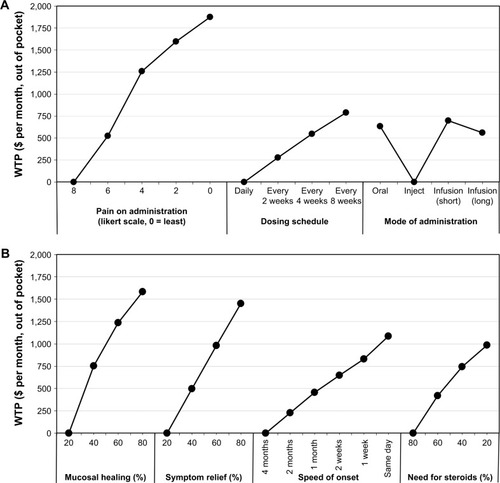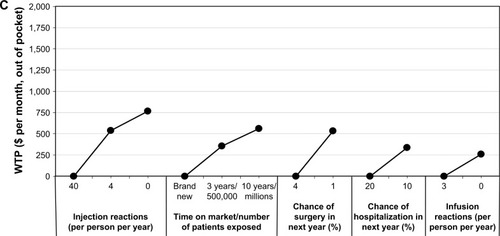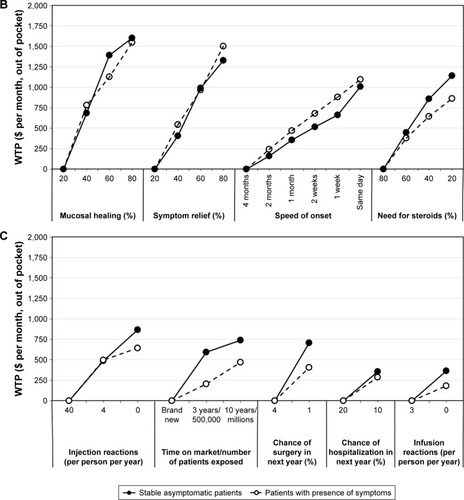Figures & data
Table 1 Treatment features and attribute levels for WTP survey
Table 2 Baseline characteristics of WTP survey respondents reporting a diagnosis of IBD (N=586)
Table 3 Previous and current therapies of WTP survey respondents reporting a diagnosis of IBD
Figure 1 WTP ($ per month, out of pocket) for N=586 respondents reporting a diagnosis of IBD.
Abbreviations: IBD, inflammatory bowel disease; WTP, willingness-to-pay.


Figure 2 WTP ($ per month, out of pocket) for stable asymptomatic patients (no symptoms during previous 12 months, n=224) or patients with presence of symptoms (≥1 episode of symptoms or disease worsening in previous 12 months, n=362).
Abbreviation: WTP, willingness-to-pay.


